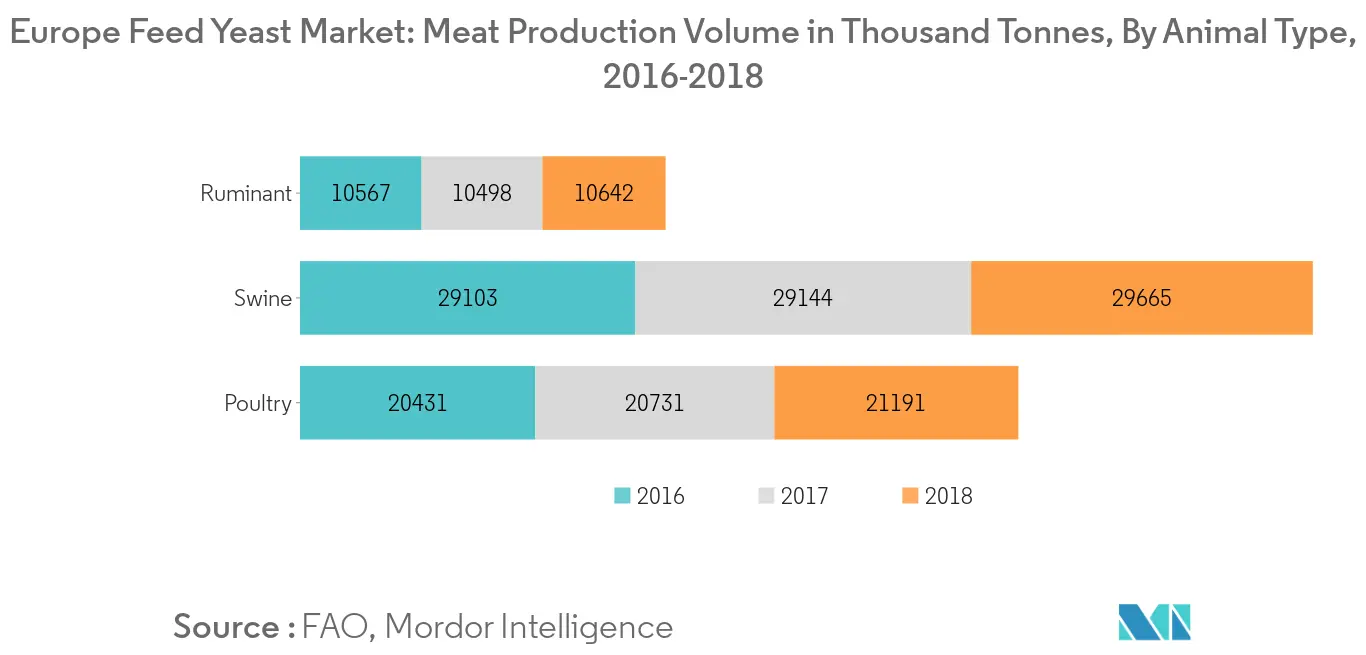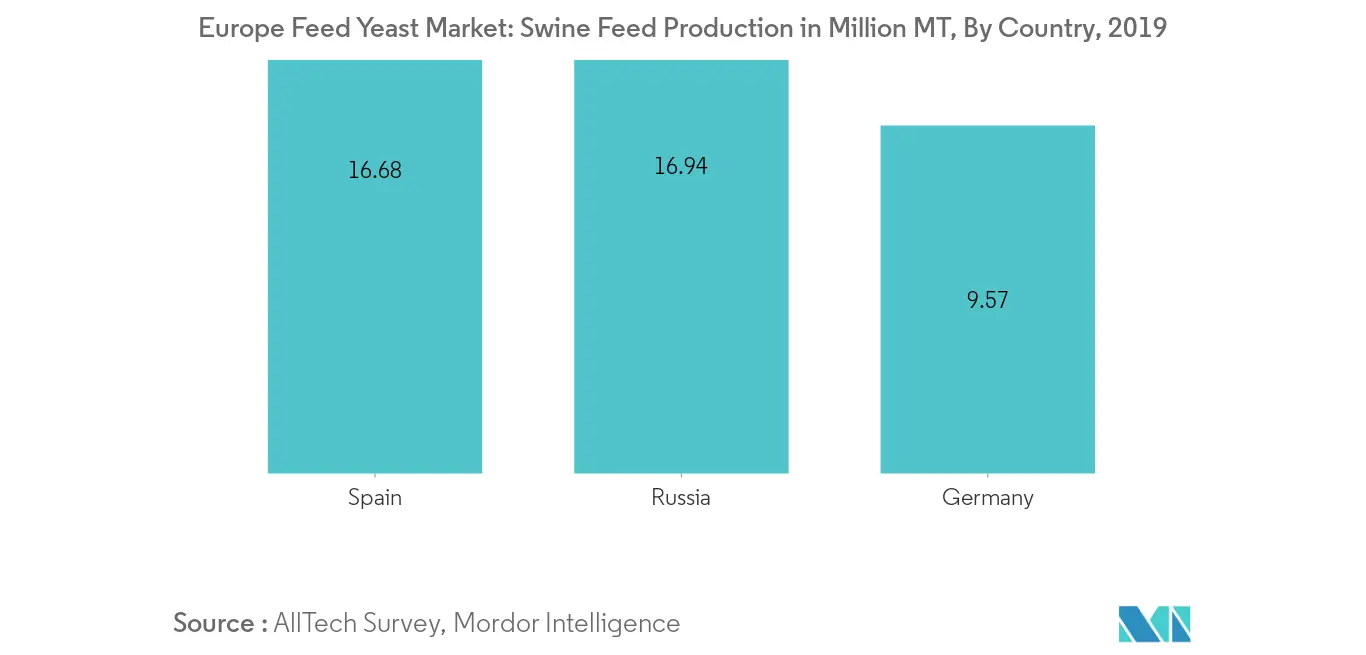Market Trends of Europe Feed Yeast Industry
This section covers the major market trends shaping the Europe Feed Yeast Market according to our research experts:
Increased Consumption of Meat and Meat Products
According to the AllTech feed survey in the year 2019, The European compound feed industry has 4,000 production sites, often in rural areas, which offer few other employment opportunities in the region. Farm animals in the European Union consume an estimated 478 million metric tons of feed a year, and about 30% (156 million metric tons) of it is produced by compound feed manufacturers. The rising demand for animal meat and dairy products is expected to boost the production of compound feed in the region, thereby acting as a catalyst for the feed additive market during the forecast period. The growing demand for livestock products has been driving significant changes on the supply side that are aimed at improving livestock product yields. New capital-intensive technologies have made the production of poultry and pig meat in industrial style production facilities possible across the region, especially in countries where land is limited.

Increased Compound Feed Production
According to the AllTech feed survey in the year 2019, Spain and Russia among the European Union are the major producers of compound feed accounting for 35 million MT and 40.5 million MT annual production. The addition of yeast to feed is one of the ways to improve the gut health of the animal and aid in increased feed conversion ratio, resulting in a positive impact on the meat yield. While live yeast is mostly used in home-based feed, produced from corn and soybean, other forms of yeast are popular in compound feed. It has been estimated that close to 40% of the feed yeast consumption globally is accounted for, by swine feed as it is majorly consumed in this region. With the pig meat production increasing every year and with increased emphasis on productivity and weight gain of pigs, the swine Feed Yeast Market is projected to grow at a robust pace over the forecast period.


